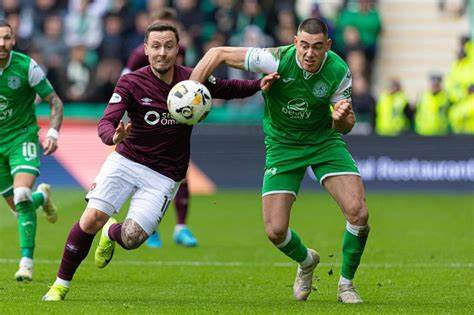
Paraphrased Version:
Hearts and Hibs have become central examples in an ongoing debate over potential major changes to the Scottish Premiership’s league format.
According to SPFL chief operating officer Calum Beattie, the finishes of both Edinburgh clubs over the past two seasons highlight how the current “split” format keeps the league competitive and engaging. Last season, Hibs missed out on a top-six spot after a draw against Motherwell, while Hearts were comfortably third. This time around, the script flipped—Hearts’ draw in Lanarkshire pushed them into the bottom half, while Hibs climbed to third.
As talks about restructuring the Premiership intensify—with proposals ranging from 10 to 16-team leagues—Beattie pointed to the drama surrounding the split format as proof of its effectiveness.
“In a 12-team league, the split is necessary to avoid an exhausting 44-game schedule,” Beattie explained. “It adds excitement, especially in the race for the top six. Just a few years ago, seven clubs were in contention for three spots in the final pre-split fixture round. Similar scenarios played out in the past two seasons, with dramatic finishes determining who made the top half.”
He highlighted that St Mirren clinched a top-six finish this year by narrowly defeating Ross County, while Hearts and Motherwell played to a goalless draw and fell short.
Beattie acknowledged recent discussions over league restructuring and conceded no format is perfect. Still, he emphasized that the split has been a valuable and exciting feature since its introduction in 2000/01. The SPFL Competitions Working Group is set to review the current format and consider any viable alternatives later this month.
Post-split Fixture Imbalance
However, the split format isn’t without its issues. One problem is fixture imbalance—this season, for example, Hibs are set to travel to St Mirren for a third time.
Beattie addressed these concerns, stating that the SPFL tries to balance home and away matches as evenly as possible, aiming for each team to have 19 of each by season’s end. This year, however, St Mirren will have 20 home games while Motherwell will only have 18—an imbalance not seen since 2017/18.
“Fixture reversals have been necessary every year since the split was introduced. We do our best to limit them and avoid affecting matches that could decide the title, European spots, or relegation battles. We also try not to reverse major derbies and consider how clubs have previously been impacted,” Beattie added.







